Top speed 2,124 km/h Range 3,250 km Wingspan 9.4 m | Length 15 m Cruise speed 950 km/h First flight October 25, 1955 | |
 | ||
Engine types Turbojet, Rolls-Royce Avon | ||
Saab 35 draken spitting flames
The Saab 35 Draken ("the kite" or "the dragon") was a Swedish fighter aircraft manufactured by Saab between 1955 and 1974. The Draken was built to replace the Saab J 29 Tunnan and, later, the fighter variant (J 32B) of the Saab 32 Lansen. The indigenous J 35 was an effective supersonic Cold War fighter that was also successfully exported to Austria, Denmark, Finland, and to the United States as a test pilot training aircraft.
Contents
- Saab 35 draken spitting flames
- Design and development
- Operational history
- Proof of concept
- Full size Drakens
- Proposed modifications
- Operators
- Survivors
- Specifications J 35F Draken
- References
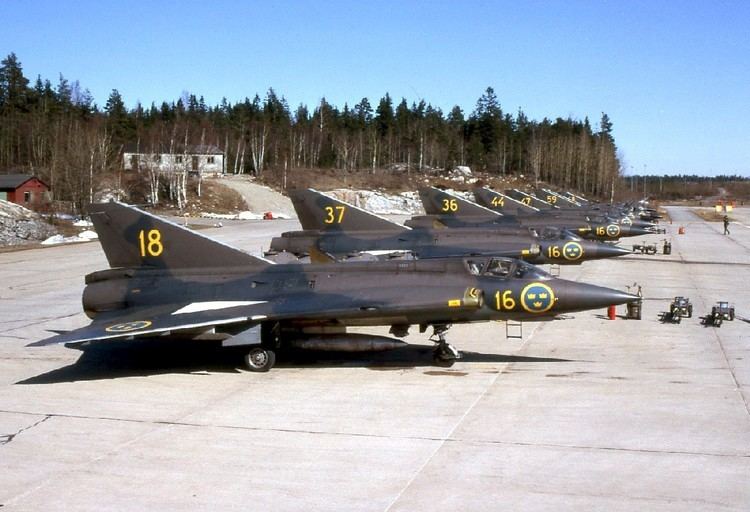
The Draken was the first fully supersonic aircraft to be deployed in Western Europe.
Design and development
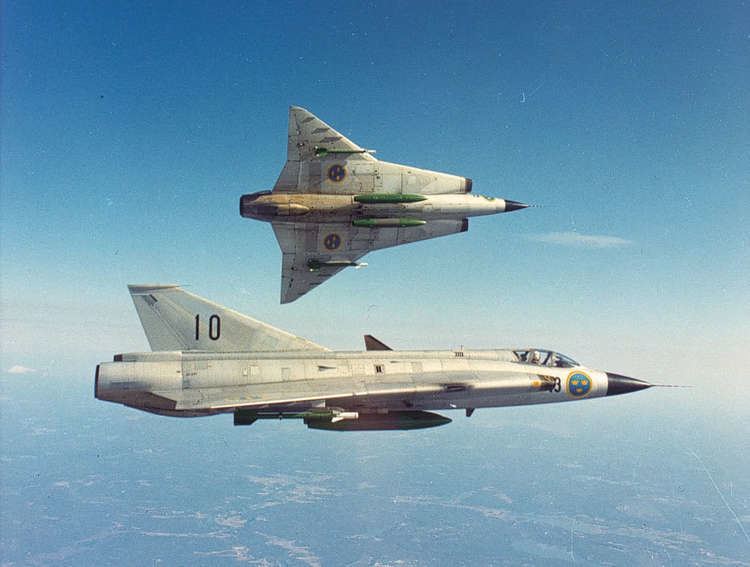
As the jet era started, Sweden foresaw the need for a jet fighter that could intercept bombers at high altitude and also successfully engage fighters. Although other interceptors such as the US Air Force's F-104 Starfighter were being conceived during the same period, Saab's "Draken" would have to undertake a role unique to Sweden. Requirements included the ability to operate from reinforced public roads used as part of wartime airbases, and for refuelling and rearming to be carried out in no more than ten minutes by conscripts with minimal training. In September 1949, the Swedish Defence Material Administration issued a request for a fighter/interceptor aircraft, and work began at Saab the same year.
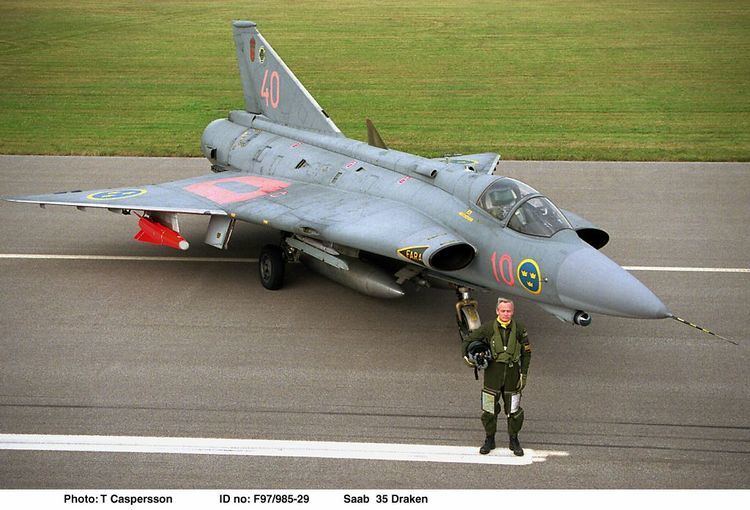
Draken's design incorporated a distinctive "double-delta" configuration, with one delta wing within another larger delta. The inner wing has an 80° angle for high-speed performance, while the outer 60° wing gives good performance at low speeds. Propulsion was provided by a single Svenska Flygmotor RM6B/C turbojet (Rolls-Royce Avon 200/300). A ram turbine, under the nose, provided emergency power, and the engine had a built-in emergency starter unit. The Draken could deploy a drag parachute to reduce its landing distance.
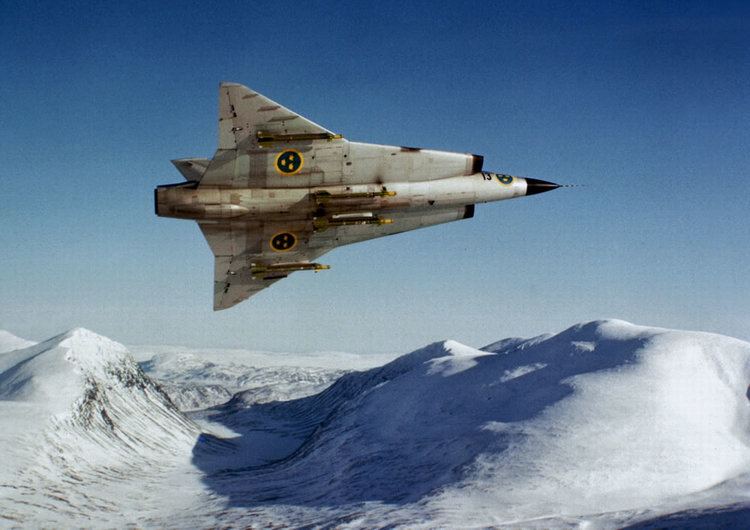
The double-delta shape was so revolutionary that it warranted the only sub-scale test aircraft built in Sweden: the Saab 210, unofficially nicknamed "Lilldraken" (the little kite). The Saab 210 tested the concept of the double delta, first flying on 21 January 1952. The 210's successful testing results led to an order for three full-size Draken prototypes. The first prototype, not fitted with an afterburner, made its maiden flight on 25 October 1955. The second prototype, equipped with an afterburner, unintentionally broke the sound barrier on its first flight while climbing.
Operational history
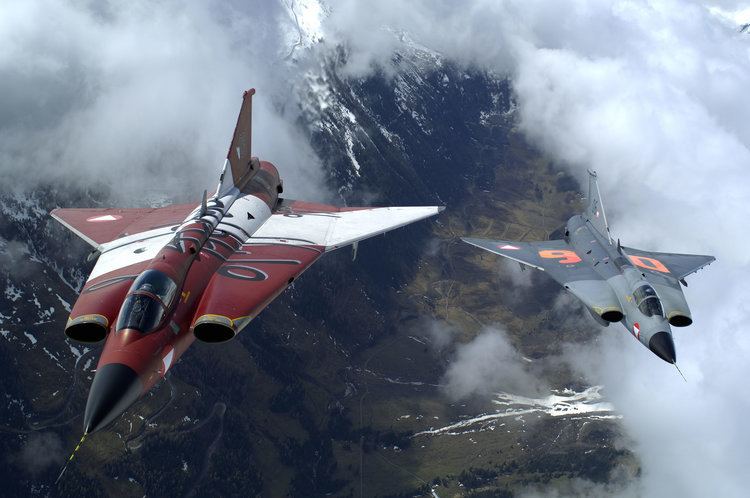
Although the J 35 Draken was not designed to be a dog-fighter, it proved to have a good quick-turn capability and was a capable fighter plane. It entered service with the Swedish Air Force in 1960. A total of 651 Saab Drakens were manufactured. Sweden's fleet of Drakens came in six different versions, and two other models of the Draken were offered for export. The early models were intended purely for air defense. The last model built was the J 35F, the final version to remain in Swedish service. These aircraft were retired in the 1990s and replaced by the Saab JAS 39 Gripen.
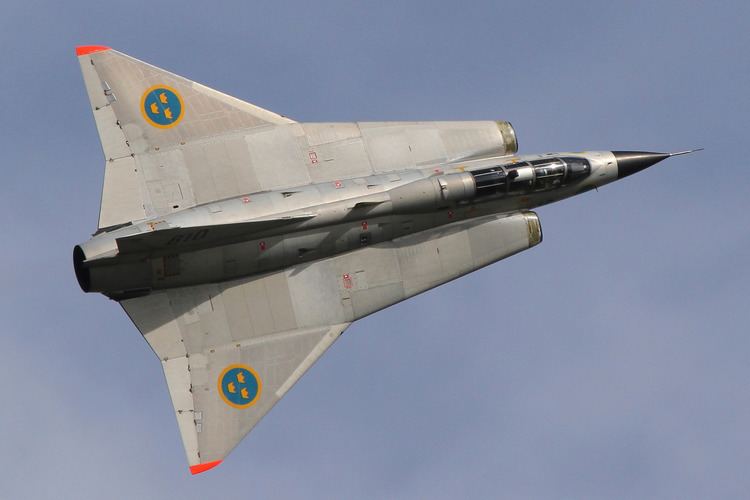
The J 35 Draken design underwent several upgrades. The last was the J 35J version, made in the late 1980s, although by then, the Draken had been almost replaced by the Saab 37 Viggen in the Swedish Air Force. The J 35J was a service-life extension program because the delivery of the new Saab JAS 39 Gripen was suffering delays. The extension program was intended to keep the Draken flying into the 2000s, but due to cutbacks and high maintenance costs, the Draken was phased out of Swedish service in December 1998, although the aircraft remained in limited numbers in both military and civilian roles. Its export customers included Denmark and Finland. In May 1985, the Austrian Air Force purchased 24 J 35Ds refurbished by Saab.
All Drakens are interceptors with limited air-to-ground capability, with the sole exception of the Danish Drakens, which are strike aircraft capable of carrying AGM-12 Bullpup missiles, electronic countermeasures, and increased internal and external fuel storage. The Danish Drakens are so far the heaviest of the series to have flown. Danish J 35 aircraft were retired in 1993.
Finland updated its 35XS fleet with new avionics, cockpit displays, navigational/attack systems, and electronic countermeasures during the 1990s, but these were finally retired in 2000 to be replaced by F/A-18 Hornets.
Austria was the last country to keep the Draken in military service. The Austrian Air Force bought refurbished J 35Ds. This was the last Austrian Air Force fighter plane with internal cannons for their lone air-to-air armament because of the restriction in the Austrian State Treaty of 1955. This forbade their carrying air-to-air missiles. This restriction was dropped in 1993 because of violations from the nearby Yugoslavian air combat services. American AIM-9 Sidewinder missiles were purchased. These Drakens were retired in 2005, when they were replaced by former Swiss Air Force F-5 Tiger IIs, while waiting for new Eurofighter Typhoons.
In the United States, the National Test Pilot School (NTPS) used to operate six Drakens that were formerly in Danish service. They were retired in 2009.
Proof of concept
Full-size Drakens
Proposed modifications
Before it was decided to develop the JAS 39 Gripen in the 1970s, studies where undertaken on modification for low flight hour J 35F airframes.
The total number of Drakens produced and delivered was 644.
Operators
The Saab 35 Draken was withdrawn from military use in 2005. Several aircraft fly in the civilian service, mainly by the National Test Pilot School.
Survivors
A small number of Drakens are still with civilian owners mainly in the United States, many former-operational aircraft have been preserved in the operating nations.
Specifications (J 35F Draken)
Data from The Great Book of Fighters, Combat Aircraft since 1945, Saab 35 Draken in Finnish Air Force, SAAB Aircraft since 1937.
General characteristics
Performance
Armament
